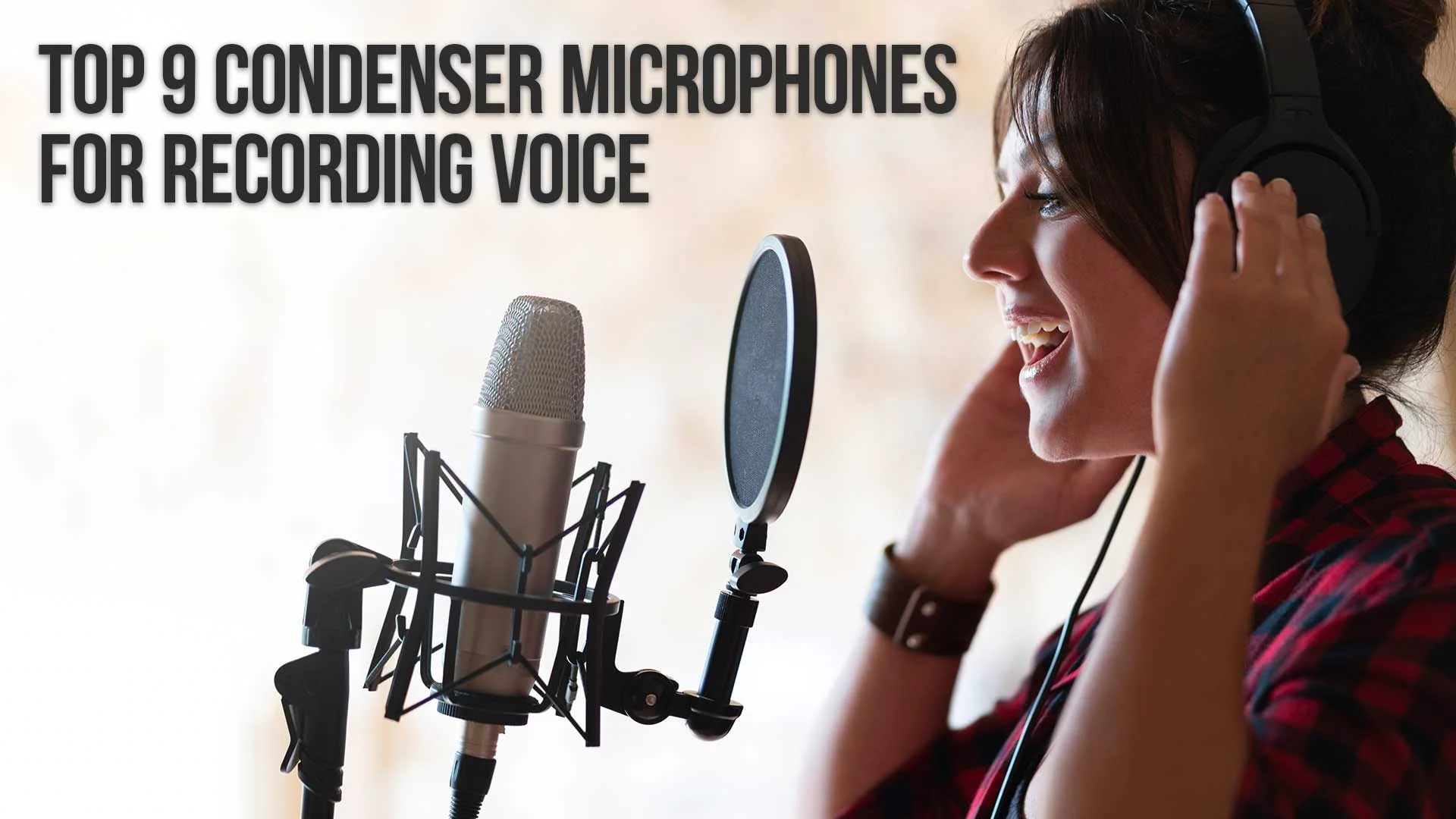Whether you need a condenser microphone for recording vocal tracks for your next hit song, to really up the quality of your voiceover recording, or accentuate your voice for your podcast, we've got the guide here for you with the best condenser mics for recording voice in 2024 and beyond!
Table of Contents
- TL;DR Best Condenser Mics Quick Picks / Buying Guide
- First Off: What Is A Condenser Microphone?
- What Are Some Of The Features Of Condenser Microphones?
- Common Misconceptions About Condenser Microphones
- Tips On Microphone Maintenance And Troubleshooting
- Best Condenser Microphones For Recording Voice
- Rode NT1-A
- Sony C-800G
- Audio-Technica AT2020
- Neumann U 87 Ai
- AKG C414 XLII
- Shoeps Mk41
- Rode NTK
- Audio-Technica AT4050
- Neumann TLM 103
- Top 9 Condenser Microphones Comparison Chart
TL;DR Best Condenser Mics Quick Picks / Buying Guide
Best All Around Condenser Mic: Sony C-800G
Budget Condenser Mic: Rode NT1-A (best vocal mic under 1500)
Best Condenser Mic if You're Also a Musician: AKG C414 XLII
Best Condenser Mic if You're Frank Sinatra: Neumann U 87 Ai
Condenser Mic the Author of this Blog Post Uses for Voiceover: Neumann TLM 103
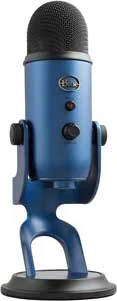
First off: What is a Condenser Microphone?
A condenser mic is a type of electro-acoustic transducer. It converts sound into an electrical signal.
Condenser mics are typically used in studios and only occasionally for live performances. They are not as good as dynamic microphones for recording loud sound sources.
They require Phantom power, which can come from a mixing console or an external power supply.
What are Some of the Features of Condenser Microphones?
When it comes to choosing a condenser microphones for recording vocals, there are a few things you'll want to consider. The first is whether you need a cardioid or omnidirectional pick up pattern.
Cardioid means that the microphone will pick up sound from the front while rejecting noise from the sides and back.
Cardioid microphones are great for recording a single person, like in an interview setting, or if you're the only person talking on your podcast.
However, they're not ideal for recording multiple people at once since they tend to cancel out sounds coming from the sides.
Omnidirectional means that the microphone will pick up sound equally from all directions.
This is ideal if you're recording multiple people in one space, like a roundtable discussion.
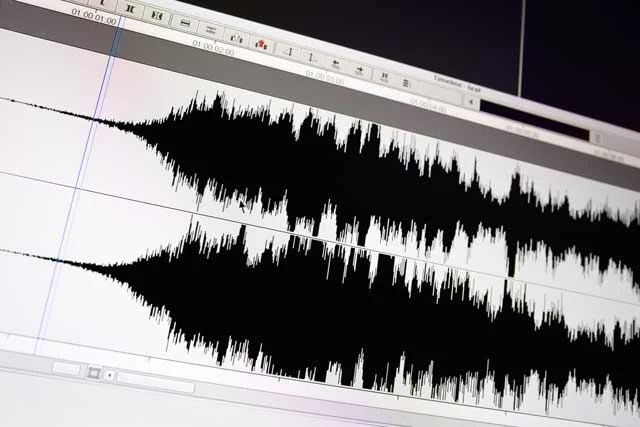
The next thing to consider is frequency response.
Frequency Response means how accurately a microphone can reproduce the different frequencies of sound.
The human ear can hear sounds in the range of 20 Hz to 20,000 Hz, but condenser mics usually have a frequency response of 40 Hz to 20 kHz.
Some microphones have a wider frequency response than others. For example, the Blue Yeti has a frequency response of 15 Hz to 22 kHz.
If you want your recording to sound as natural as possible, look for a microphone with a wide frequency response.
You'll want a microphone with a flat frequency response for accurate reproduction of sound. This means the microphone does not add boosts along any part of the frequencies of the human voice.
Some microphones have a boost in the lower frequencies, which can add warmth to your recordings. Others have a boost in the higher frequencies, which can make your recordings sound brighter. Testing microphones will help you figure out the one that's best for your unique voice and its frequencies.
Finally, you'll want to consider the size of the diaphragm. The larger the diaphragm, the better the microphone will be at picking up low frequencies.
The small diaphragms are more sensitive and can pick up higher frequencies, but they're also more prone to handling noise.
Last but not least, you'll want to consider the price. Condenser mics can range from under $100 to over $1000.
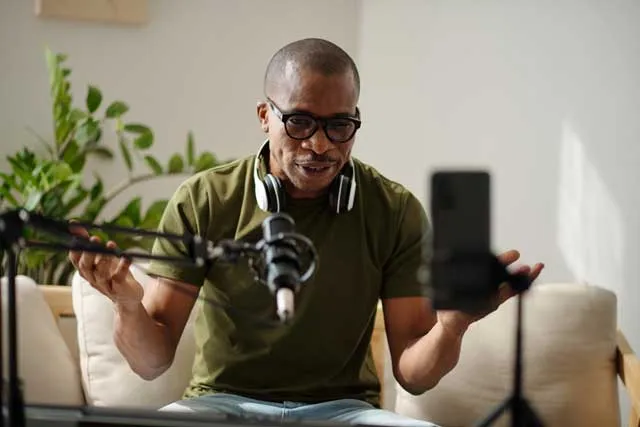
Common Misconceptions About Condenser Microphones
There are several misconceptions about condenser microphones that are worth addressing.
Firstly, many believe that condenser mics are inherently superior to dynamic mics; however, the truth is they serve different purposes.
Condenser mics are more sensitive and provide a higher-quality sound for studio applications, but dynamic mics are more durable and better suited for live performances.
Another common myth is that all condenser mics require Phantom power.
While many do, there are models that can operate with batteries or even dynamic phantom power.
Lastly, it's often thought that the more expensive the microphone, the better the sound.
While higher-priced mics often offer better quality, many affordable models provide excellent sound, proving that cost isn't always the sole indicator of performance.

Tips on Microphone Maintenance and Troubleshooting
Maintaining your microphone properly can significantly extend its life and ensure optimal performance.
Always store your microphone in a dry and dust-free environment.
Regularly cleaning the body of the microphone and the pop filter (if used) can prevent build-up that might affect sound quality.
For troubleshooting, if you encounter a drop in sound quality or unexpected noise, first check your cable connections and inspect the cables for any damage.
If using a condenser microphone, ensure that your audio interface or mixer is supplying the correct Phantom power.
If the issue persists, consult the microphone's manual or contact the manufacturer for support.
Remember, handling microphones with care and addressing issues promptly can prevent long-term damage.
Best Condenser Microphones for Recording Voice
Now that we've got that out of the way, let's get started with our list of the best condenser mics for recording voice.
Rode NT1-A
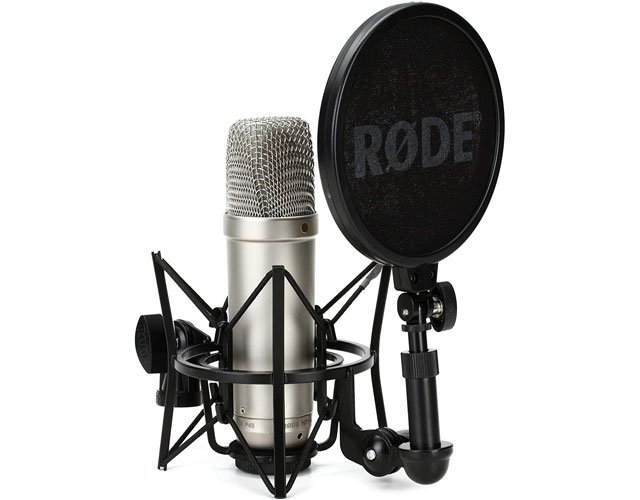
About: The Rode NT1-A is a large diaphragm, cardioid condenser mic. It has a frequency response of 20 Hz to 20 kHz and a self-noise level of 5 dBA. The NT1-A also comes with an internal shock mount and a pop filter. It is a very popular mic and we definitely consider it one of the top ten condenser microphones.
Pros:
The Rode NT1-A is one of the world's quietest microphones, making it great for recording voice. It's also incredibly versatile and can be used for a variety of applications, from podcasting to music recording. It is also inexpensive for a quality condenser mic.
My Review of the Rode NT1-A
⭐⭐⭐⭐
Rode NT1-A has been a reliable workhorse in my studio. Its low noise level is a standout, making it perfect for voiceover work where clarity is key.
I've used it in podcasting too, and it consistently delivers a warm, rich sound. Its durability is also a plus, having survived numerous sessions without any issue.
Sony C-800G

About: Known as one of the best microphones worldwide, the Sony C-800G is perfect for recording voices in studios or post-production houses. Designed to produce outstanding sound quality, this microphone creates rich and full tones.
The C-800G is equipped with a high-quality dual large diaphragm for accurate vocal imitation, vacuum tube warm sound quality via a 6AU6 vacuum tube, a unique Peltier-based cooling system to guarantee optimum tube operating temperature, and an electronically selectable pickup pattern (Omni/Uni) for various recording applications. A power supply (AC-MC800G) and all required accessories are included in the package.
Pros:
The Sony C-800G is one of the most versatile microphones on the market. It's great for recording voice, but can also be used for instruments and even environmental sounds. It's also very quiet, making it ideal for recording in sensitive environments.
My Review of the Sony C-800G
⭐⭐⭐⭐
Sony C-800G is, without a doubt, a high-end champion in my collection.
Its clarity and warmth bring out the best in vocals, something I've noticed in my music recordings.
It's expensive, but for professional studio work, the investment is justified.
The tube warmth it adds is subtle but noticeably enriches the sound.
Audio-Technica AT2020
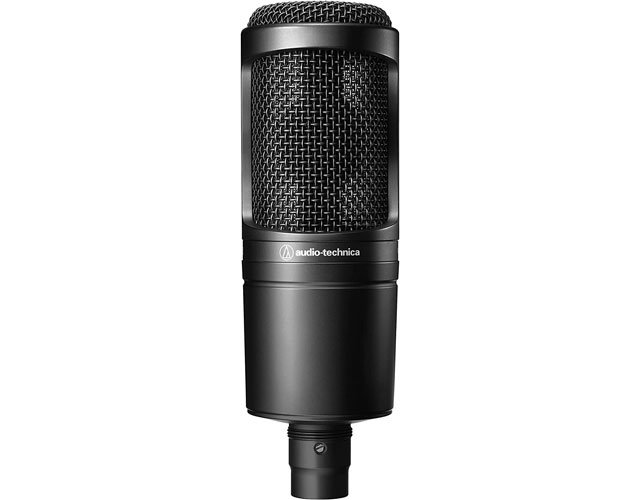
About:
The Audio-Technica AT2020 is a cardioid, condenser mic designed for critical home/project/professional studio applications.
It excels in both vocal and instrument recordings, providing accurate sound reproduction with minimal coloration.
The AT2020 features a low-mass diaphragm, custom-engineered for extended frequency response and superior transient response.
This results in exceptionally smooth, natural sound with a wide dynamic range. The microphone also includes a rugged cast aluminum body with an integrated stand mount for easy mounting and dismounting.
Pros:
The Audio-Technica AT2020 is a great all-around microphone that can be used for a variety of applications.
It's especially well-suited for recording voice, thanks to its smooth and natural sound reproduction.
It is a very affordable condenser mic.
My Review of the Audio-Technica AT2020
⭐⭐⭐
Audio-Technica AT2020 is an excellent value for its price.
It's my recommendation for beginners in podcasting due to its ease of use and good sound quality.
While it might not match the high-end mics in richness, it certainly punches above its weight.
It's also quite sturdy, handling regular use with no problems.
Neumann U 87 Ai
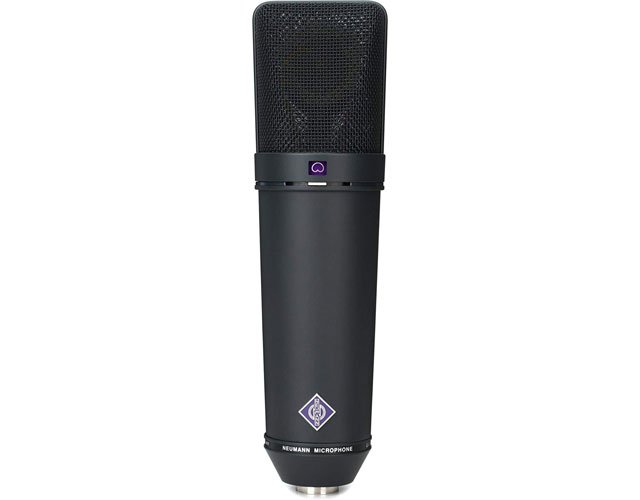
About:
The Neumann U 87 Ai is a large diaphragm, condenser mic with three directional settings: omnidirectional, cardioid, and figure-8.
It offers a wide frequency response of 20 Hz to 20 kHz and a high sensitivity of 42 mV/Pa.
The U 87 Ai features a switchable low-frequency roll-off and 10 dB pad, making it perfect for recording both vocals and instruments. It also includes an integrated pop filter and shock mount.
History of the U 87:
The U 87 is a legendary vocal microphone that has been used on some of the most iconic recordings of all time. First introduced in 1967, the U 87 quickly became the go-to vocal mic for many of the world's top recording studios.
Today, the U 87 Ai is the modern incarnation of this classic vocal microphone, featuring updated electronics and a new capsule design.
Pros:
The Neumann U 87 Ai is one of the most vocal mics in history. It offers exceptional quality and versatility, making it perfect for a variety of applications.
It is also very expensive, but worth every penny for professional studio use. Not only is it good for vocal recording, it can be used to record acoustic instruments like acoustic guitar.
I think this is the best condenser mic for vocals.
My Review of the Neumann U 87
⭐⭐⭐⭐⭐
Neumann U 87 has an iconic status for a reason.
In my voiceover work, it captures nuances like no other microphone I've used.
It's versatile, handling everything from podcasting to recording acoustic instruments.
Its build quality and consistency over years make it a studio mainstay.
If it's good enough for Frank Sinatra, it's good enough for me!
AKG C414 XLII
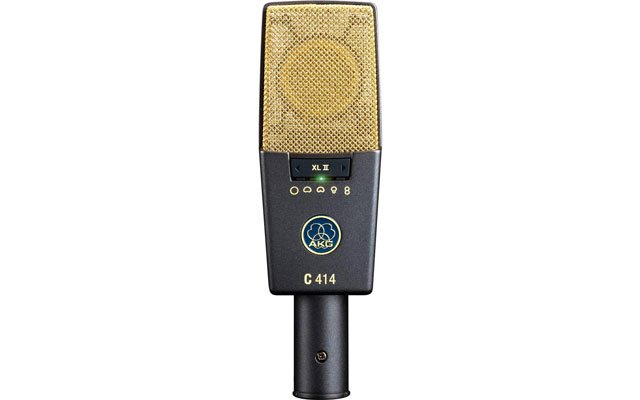
About:
The AKG C414 XLII is a multipattern, large diaphragm condenser mic that offers nine pickup patterns for maximum flexibility.
It features a wide frequency response of 20 Hz to 20 kHz and a high sensitivity of 25 mV/Pa.
The C414 XLII also includes a switchable low-frequency roll-off and 10 dB pad, making it perfect for recording both vocals and instruments. It also comes with an integrated pop filter and shock mount.
Pros:
The AKG C414 XLII is one of the most versatile microphones on the market. It's great for recording voice, but can also be used for instruments and even environmental sounds. It's also very quiet, making it ideal for recording in sensitive environments. Buying matched pairs of 414s is commonly done for making stereo recordings of instruments and ensembles. This is definitely one of the top 10 condenser microphones for vocals.
History of the AKG C414:
The AKG C414 is a legend in the world of microphones. First introduced in 1971, the C414 quickly became the go-to microphone for many of the world's top recording studios.
Today, the C414 XLII is the latest incarnation of this classic microphone, featuring updated electronics and a new capsule design.
My Review of the AKG C414
⭐⭐⭐⭐⭐
AKG C414 is a versatile and reliable mic in my arsenal.
I often use it for its multiple pickup patterns, which are great for different recording situations.
In podcasting, it adapts well to different speaker positions.
Its balanced sound and reliability make it a go-to for various projects.
A stereo pair of these is great for recording all sorts of instruments, especially when used as drum overheads.
And I'm particularly keen on the 414 as they complement my singing voice well. I've recorded vocals on this mic even with more expensive mics around.
Shoeps mk41
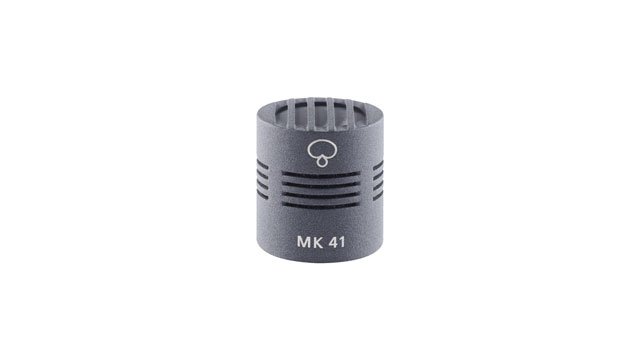
About:
The Shoeps mk41 is a small diaphragm, condenser mic that is often used for recording vocals and acoustic instruments.
It offers a wide frequency response of 20 Hz to 20 kHz and a high sensitivity of 25 mV/Pa.
The mk41 also includes a switchable low-frequency roll-off and 10 dB pad, making it perfect for recording both vocals and instruments. It also comes with an integrated pop filter and shock mount.
Pros:
The Shoeps mk41 is a great all-around microphone that can be used for a variety of applications. It's especially well-suited for recording voice, thanks to its smooth and natural sound reproduction.
It's also very affordable, making it a great option for budget-conscious recording enthusiasts.
My Review of the Schoeps MK41
⭐⭐⭐⭐
Schoeps MK41 has been an exceptional performer in my usage of it, especially in challenging acoustic environments.
Its supercardioid pattern is remarkably effective at rejecting off-axis sound.
In my experience, this makes it excellent for capturing dialogue in video post-production, where background noise can be an issue.
The sound quality is pristine and natural, making it a top choice for critical recording applications.
Rode NTK
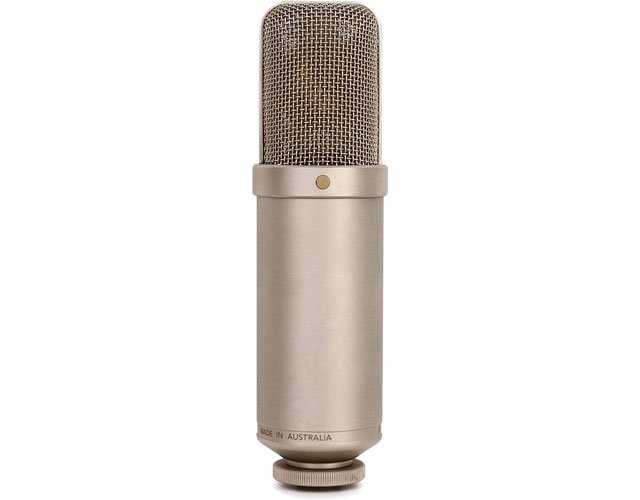
About:
The Rode NTK is a large diaphragm, condenser microphone that is often used for recording vocals and acoustic instruments.
It offers a wide frequency response of 20 Hz to 20 kHz and a high sensitivity of 40 mV/Pa.
The NTK also includes a switchable low-frequency roll-off and 10 dB pad, making it perfect for recording both vocals and instruments. It also comes with an integrated pop filter and shock mount.
Pros:
The Rode NTK is a great all-around microphone that can be used for a variety of applications. It's especially well-suited for recording voice, thanks to its smooth and natural sound reproduction.
It's also very affordable, making it a great option for budget-conscious recording enthusiasts.
My Review of the Rode NTK
⭐⭐⭐⭐
Rode NTK has been a delight for me to use, especially for vocal recordings.
Its tube-driven design adds a warm, vintage character to the sound that I find very appealing.
In voiceover work, it brings a richness and depth that enhances the vocal presence.
It's not just about warmth; the clarity and detail it captures are impressive, making it a versatile tool in most any vocal situation.
Audio-Technica AT4050

About:
The Audio-Technica AT4050 is a multipattern, large diaphragm condenser mic that offers nine pickup patterns for maximum flexibility.
It features a wide frequency response of 20 Hz to 20 kHz and a high sensitivity of 25 mV/Pa.
The AT4050 also includes a switchable low-frequency roll-off and 10 dB pad, making it perfect for recording both vocals and instruments. It also comes with an integrated pop filter and shock mount.
Pros:
The Audio-Technica AT4050 is one of the most versatile microphones on the market. It's great for recording voice, but can also be used for instruments and even environmental sounds.
It's also very quiet, making it ideal for recording in sensitive environments.
Buying matched pairs of 4050s is commonly done for making stereo recordings of instruments and ensembles.
My Review of the Audio-Technica AT4050
⭐⭐⭐⭐
Audio-Technica AT4050 strikes a perfect balance between versatility and sound quality in my studio.
Its multi-pattern capability allows me to use it in a wide range of recording scenarios, from voiceovers to instrumentals.
I appreciate its natural sound reproduction, which doesn't color the audio excessively.
Its reliability and consistent performance make it a go-to microphone for many of my projects.
Neumann TLM 103
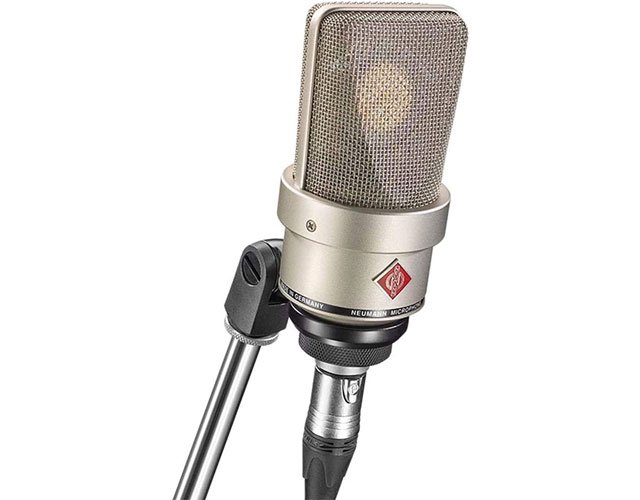
About:
The Neumann TLM 103 is a large diaphragm, versatile condenser microphone that is often used for recording vocals and live instruments like acoustic guitars.
It offers a wide frequency response of 20 Hz to 20 kHz and a high sensitivity of 25 mV/Pa.
The TLM 103 also includes a switchable low-frequency roll-off and 10 dB pad, making it perfect for recording both vocals and instruments. It also comes with an integrated pop filter and shock mount.
Pros:
The Neumann TLM 103 is one of the most popular microphones on the market. It's well-known for its smooth sound reproduction, making it ideal for recording vocals. It's also very affordable for the Neumann brand, making it a great option for budget-conscious recording enthusiasts.
My Review of the Neumann TLM-103
⭐⭐⭐⭐⭐
Neumann TLM-103 is the microphone I rely on for all my voiceover work.
Its ability to capture vocal nuances is unparalleled in my experience. The sound is crisp and detailed, yet it has a smoothness that's essential for professional voiceover quality.
I've found it to be incredibly consistent and reliable, a true cornerstone in my recording setup.
Top 9 Condenser Microphones Comparison Chart
| Microphone Model | Type | Polar Pattern | Frequency Response | Ideal Use |
|---|---|---|---|---|
| Rode NT1-A | Condenser | Cardioid | 20Hz - 20kHz | Voiceover, Podcasting |
| Sony C-800G | Tube Condenser | Cardioid | 20Hz - 18kHz | Professional Vocals, Studio Recording |
| Neumann U 87 | Condenser | Multi-Pattern | 20Hz - 20kHz | Versatile Studio Use |
| AKG C414 | Condenser | Multi-Pattern | 20Hz - 20kHz | Instruments, Vocals, Room Miking |
| Audio-Technica AT2020 | Condenser | Cardioid | 20Hz - 20kHz | Home Studio, Podcasting |
| Shure SM7B | Dynamic | Cardioid | 50Hz - 20kHz | Podcasting, Broadcasting |
| Sennheiser MKH416 | Shotgun Condenser | Supercardioid | 40Hz - 20kHz | Field Recording, Video Production |
| Bluebird SL | Condenser | Cardioid | 20Hz - 20kHz | Vocals, Instrumentals |
| Behringer B-1 | Condenser | Cardioid | 20Hz - 20kHz | Budget Home Recording |
| Schoeps MK41 | Condenser | Supercardioid | 40Hz - 20kHz | Film, Theatre, Studio |
| Rode NTK | Tube Condenser | Cardioid | 20Hz - 20kHz | Vocals, Voiceover |
| Neumann TLM-103 | Condenser | Cardioid | 20Hz - 20kHz | Professional Voiceover |
| Audio-Technica AT4050 | Condenser | Multi-Pattern | 20Hz - 18kHz | Multipurpose Recording |
Best Microphones For Recording Voice FAQ
Which microphone is best for recording?
The answer to this question depends on what you're looking to record. For vocals, we recommend the Rode NTK or the Audio-Technica AT4050. For acoustic instruments, we recommend the Shoeps mk41 or the Neumann TLM 103. And for environmental sounds, we recommend the Sennheiser MKH 416.
What is the best microphone to use at home?
The best microphone to use at home depends on what you're looking to record. For vocals, we recommend the Rode NTK or the Audio-Technica AT4050. For acoustic instruments, we recommend the Shoeps mk41 or the Neumann TLM 103. And for environmental sounds, we recommend the Sennheiser MKH 416.
What microphone do Youtubers use?
There is no one-size-fits-all answer to this question, as different Youtubers use different microphones depending on their needs. However, some popular microphones used by Youtubers include the Rode NTK and the Audio-Technica AT4050.
How much is a decent recording mic?
A decent recording mic will typically cost between $100 and $1000. However, there are some high-end microphones that can cost upwards of $5000.
What is the best brand of condenser microphone?
There is no one-size-fits-all answer to this question, as different brands offer different advantages and disadvantages. However, some popular brands of condenser mics include Rode, Audio-Technica, Neumann, and Sennheiser.
What's the best condenser mic for vocals?
The best condenser mic for vocals depends on your needs and budget. Some popular options include the Rode NTK, the Audio-Technica AT4050, and the Neumann TLM 103.
Are condenser mics the best?
Condenser mics are often considered to be the best type of microphone for recording, due to their wide frequency response and high sensitivity. However, they are also more expensive than other types of microphones, so it's important to decide what your needs are before making a purchase.
What is the most sensitive microphone?
The most sensitive microphone is the Audio-Technica AT4050, which has a sensitivity of 25 mV/Pa.
What mic does Billie Eilish use?
Billie Eilish uses the Audio-Technica AT4050.
Is condenser mic good for home recording?
Condenser mics are often considered to be the best type of microphone for home recording, due to their wide frequency response and high sensitivity. However, they are also more expensive than other types of microphones, so it's important to decide what your needs are before making a purchase.
What is the best USB microphone?
The best USB microphone depends on what you're looking to record. For vocals, we recommend the Rode NT-USB or the Audio-Technica AT2020USB+. For acoustic instruments, we recommend the Blue Yeti or the Zoom H5. And for environmental sounds, we recommend the Tascam DR-05X.
What are the 4 types of mics?
The four main types of microphones are dynamic microphones, condenser mics, ribbon mics, and USB.
Dynamic microphones are the most common type, and are typically used for live performances.
A Condenser mic is more sensitive than a dynamic mic and are often used for recording.
Ribbon microphones are similar to condenser mics, but have a lower output level.
USB microphones can be used with computers and are often used for podcasting or Skype calls.
What is the best microphone for podcasting?
The best microphone for podcasting depends on your needs and budget. Some popular options include the Rode NT-USB, the Audio-Technica AT2020USB+, and the Blue Yeti.
Many podcasters use a dynamic mic for its better noise rejection.
What microphone is good for singing?
The best microphone for singing depends on your needs and budget. Some popular options include the Rode NTK, the Audio-Technica AT4050, and the Neumann TLM 103.
Dynamic mics are best used as vocal microphones for live performance.
What microphone do famous singers use?
Famous singers often use high-end condenser mics, such as the Rode NTK or the Neumann TLM 103 or U 87 for recording vocals in the recording studio. However, there is no one-size-fits-all answer, as different singers use different microphones depending on their needs.
Again, dynamic mics are used usually for live performance.
Do studios use condenser mics?
Yes, studios often use condenser microphones for their wide frequency response and high sensitivity in recording vocals.
Any reputable recording studio will have a variety of dynamic microphones and condensers for recording vocals as well as recording acoustic guitar and drum overheads.
Studio mics tend to be more expensive and with more features, like rejection of room noise, and large diaphragms for recording vocals as well as musical instruments.
Dynamic mics are used for recording guitar amps while a condenser studio microphone is best for recording acoustic guitars and other acoustic instruments.
What is the best budget microphone?
The best budget microphone depends on what you're looking to record. For vocals, we recommend the Audio-Technica AT2020 or the Rode NT1A. For acoustic instruments, we recommend the Zoom H5 or the Tascam DR-05X. And for environmental sounds, we recommend the Sony PCM-M10.
Do condenser mics sound better?
Condenser microphones typically have a wider frequency response and are more sensitive than other types of microphones, which can make them sound better. However, they are also more expensive than other types of microphones, so it's important to decide what your needs are before making a purchase.
What is a studio condenser microphone?
A studio condenser microphone is a type of microphone that is typically used in recording studios. They are more expensive than other types of microphones, but offer a wide frequency response and high sensitivity.
Which is Better, Rode NT1 vs AT2020?
The AT2020 is a great mic for the price. However, the Rode NT1 is a step up in quality and would be better for professional use.

About the Author
Joseph Nilo has been working professionally in all aspects of audio and video production for over twenty years. His day-to-day work finds him working as a video editor, 2D and 3D motion graphics designer, voiceover artist and audio engineer, and colorist for corporate projects and feature films.
Pro Audio Production Related Posts
Top 9 Condenser Microphones for Recording Voice and Vocals
Best Microphones For YouTube Videos 2022
Best Gaming Headsets with Good Microphones
The Ultimate Guide to the Premiere Pro Essential Sound Panel
Best External Wired and Wireless Mics for iPhone
The Pros and Cons of Podcast Mixers
7 Best Audio Mixers for Podcasting in 2023
The 8 Best USB Audio Interfaces For Podcasters and Musicians 2023
- TL;DR Best Condenser Mics Quick Picks / Buying Guide
- First Off: What Is A Condenser Microphone?
- What Are Some Of The Features Of Condenser Microphones?
- Common Misconceptions About Condenser Microphones
- Tips On Microphone Maintenance And Troubleshooting
- Best Condenser Microphones For Recording Voice
- Rode NT1-A
- Sony C-800G
- Audio-Technica AT2020
- Neumann U 87 Ai
- AKG C414 XLII
- Shoeps Mk41
- Rode NTK
- Audio-Technica AT4050
- 9. Neumann TLM 103
- Top 9 Condenser Microphones Comparison Chart
Pro Audio Production Related Posts
Top 9 Condenser Microphones for Recording Voice and Vocals
Best Microphones For YouTube Videos 2022
Best Gaming Headsets with Good Microphones
The Ultimate Guide to the Premiere Pro Essential Sound Panel
Best External Wired and Wireless Mics for iPhone
The Pros and Cons of Podcast Mixers
7 Best Audio Mixers for Podcasting in 2023
The 8 Best USB Audio Interfaces For Podcasters and Musicians 2023
